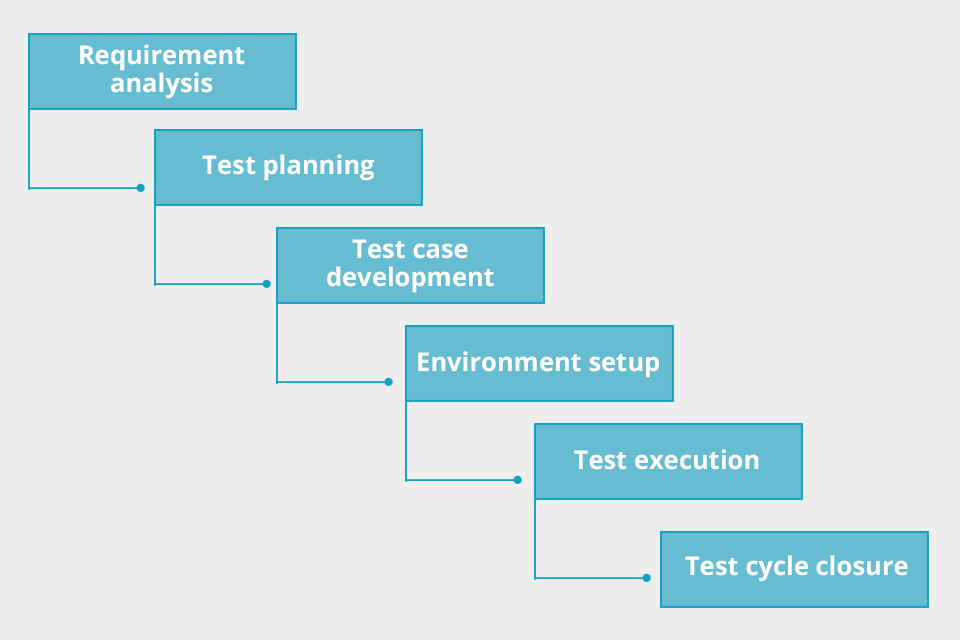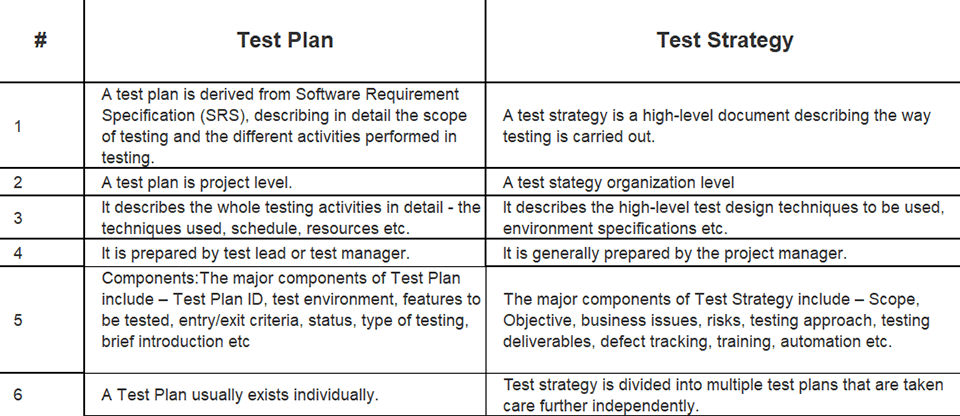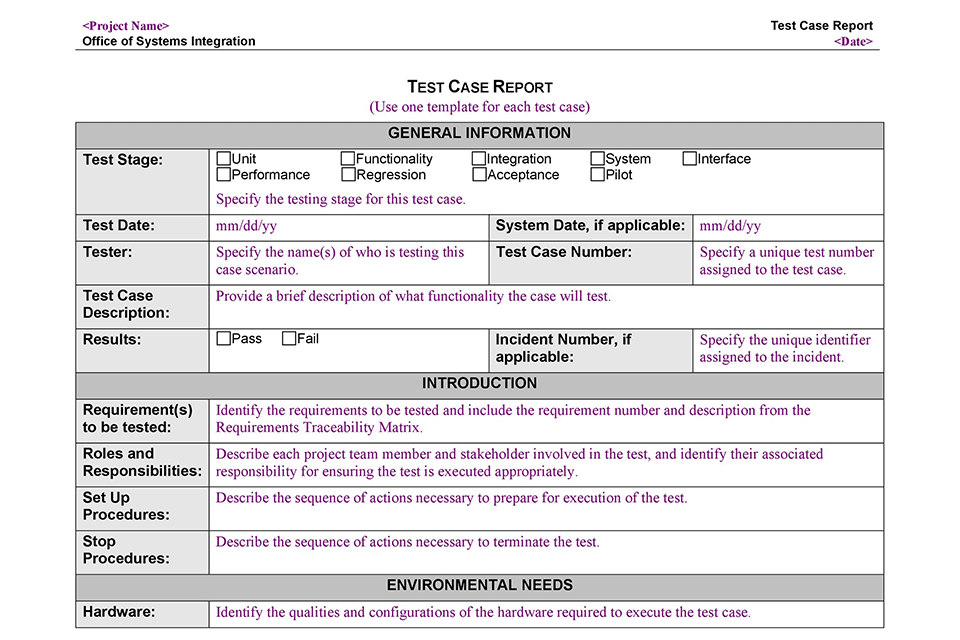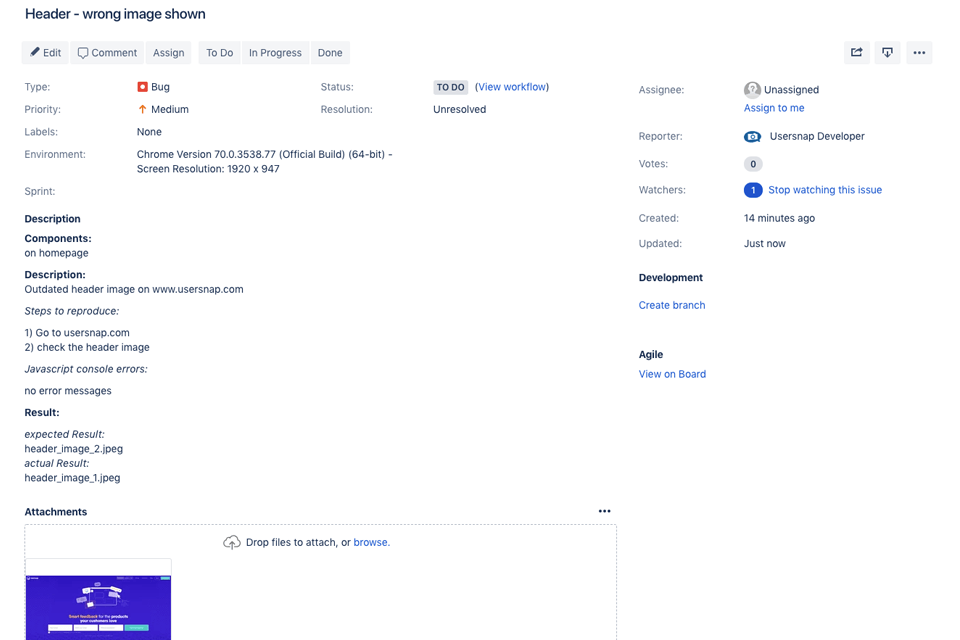According to GitHub statistics, 68% of respondents believe that about half of developers can’t find fragile code fragments on their own, usually relying on testers instead. The main goal of test optimization is to streamline the testing process in terms of both cost and time efficiency without sacrificing the quality of the results.
Test optimization allows QA employees to maximize the return on their testing efforts while ensuring the testing process is as straightforward as possible and reliable enough to produce accurate long-term results. If you’re in search of test optimization techniques that will help with your own QA testing ventures, the tips provided below are definitely worth your attention.
Start Tests in an Early Stage of the Development

Test optimization steps
A typical test optimization routine can consist of the following stages:
- Minimizing the size of the used test suites
- Establishing the smallest possible subset of test suites capable of reaching the required goals
- Getting rid of excessive test cases
- Analyzing the optimal test coverage criteria
- Improving test case maintenance
Another thing to consider is that the testing process should be launched during the first stages of development. In doing so, you’ll have an easier job locating warnings and potential issues that could otherwise snowball into enormous problems. If you need to improve the quality of your images or prepare professional product photos, you can make use of the FixThePhoto retouching services.
Since the code is significantly smaller during the first phases, locating and solving critical bugs is a lot simpler than dealing with them later on. As a result, such a technique is extremely cost-efficient and ensures the developers can deliver a higher-quality product in less time.
Tip: Begin looking for errors as early as the requirement gathering stage and continue to do so during the analysis and design stage.
Select the Testing Type
You can pick from the two options described below:
A/B testing, or split testing, occurs when the tester splits up traffic into even parts and provides different content for every part. This is the most straightforward way to approach optimization testing since all you need for this type is the default variant (current content) and an alternative variant.
MVT testing (multivariate) relies on various combinations of tested elements to determine the optimal-performing experience. This type is more demanding than the previous one when it comes to preparation since it requires at least 2 separate page elements to be altered. The benefit of choosing this approach is that it offers more accurate results.
Both approaches are distinctly different but it’s vital to remember that they aren’t necessarily contradicting, as one can be used to complement the other.
According to Ton Wesseling, you should always do as much testing as you can, at minimum for a single purchase cycle since the larger amount of data you gather, the more reliable the statistics you can use for the test.
Provide the Tools for Automated Testing
Another way to optimize testing is to use automated testing.
Here are some of the situations when automated testing can bring significant benefits:
- cross-device and cross-browser testing
- regression and smoke testing
- load testing
- performance testing
The market is full of high-quality automated testing products, both free and commercial in nature. If you’re interested in getting one, consider checking out Selenium, Katalon Studio, Unified Functional Testing, Test Complete, or Watir.
Tip: Before you make your decision, first determine the type of tests that require automation and ensure the tool you’re interested in matches your needs and budget.
Implement Exploratory and Ad Hoc Testing

Exploratory and Ad Hoc Testing
Exploratory testing entails a product investigation with zero predetermined test cases that are held to analyze how the product behaves when used. To be efficient, such an approach requires an experienced, intuitive, and creative tester. This type of testing is performed on the go, usually being planned and executed as soon as possible, after which the results are analyzed and employed for dealing with all found bugs and issues.
This is among the best optimization techniques for checking usability since it deals with different real-life scenarios and consumer behaviors. Such an approach offers fast system assessment, nearly instant feedback, and useful information regarding what areas require additional testing.
The biggest obstacle you’ll face during exploratory testing is documenting its execution, replicating found bugs, and putting together thorough reports since you can’t rely on any planned scrips or rigid structure.
Ad hoc testing is the most improvisational and informal testing technique, as it revolves around bug-guessing. It’s usually performed after all other tests and its biggest advantage is fast execution since it doesn’t need any preparation or a structured plan.
This chaotic technique allows locating bugs that can often be missed by formal tests and are difficult to recreate. That said, results of such testing are often unpredictable so the mileage you get from it can vary greatly.
Tip: The optimal strategy is usually reinforcing automated tests with exploratory and ad hoc tests. As a result, you’ll receive larger testing coverage, enhance the user experience, and will be able to devise additional test ideas.
Engage Users in Testing
End-user or user acceptance tests are usually performed during the last development phases. Inviting your target audience to try out the app can be essential for locating bugs that would otherwise go unnoticed.
If you want to perform such testing, you have to find willing users, preferably ones who are proficient in your subject matter. They can provide a unique insight into the design and functionality of your product for your QA team. Before you start the test, teach users how to handle your specific testing environment or the tools you provide.
Tip: It’s advised to a simpler tool for such testing, preferably a web-based system such as Plutora or Usersnap. The more straightforward the testing conditions for the users, the better.
User acceptance testing (UAT) can be performed in a multitude of ways, with the most popular types including:
- Alpha and beta testing are performed during the pre-release phase. Alpha tests are held by internal employees during the earliest development stages while beta tests are conducted in the end-user environment to check if the software is ready for release.
- Contract Acceptance Testing is a UAT method that allows verifying if the developed app satisfies all contract requirements.
- Regulation Acceptance Testing is used to guarantee the app meets all necessary legal regulations.
- Operational Acceptance or Production Readiness Testing is performed to determine whether the software is good enough to be produced and used. It also analyzes the existing workflow state (user training, backup plans, security checks, etc.).
- Black Box Testing analyzes the app’s features without taking into account the internal code, meaning the testers only know what the software should do but don’t know how. This UAT type enables testers to receive results similar to those provided by end-user tests.
Select the Right Tools or Frameworks
It’s crucial for tester teams to fully comprehend their goals and pick appropriate tools for specific testing frameworks. If you plan to hold a cross-browser test, it’s advised to use an open-source utility like Selenium. Meanwhile, solutions like Appium are perfect for automated testing on mobile devices.
You should also employ test management tools that can be integrated with your test automation frameworks, CI/CD utilities, bug tracking solutions, and other tools.
Some top platforms to consider:
- Zephyr is a top-class test management tool that is compatible with Agile and DevOps frameworks. It’s available in multiple versions: Zephyr for Jira –a versatile, one-project utility that runs natively within the Atlassian Jira software; Zephyr Scale — a scalable, cross-project system also integrated into Jira; and Zephyr Enterprise — an advanced standalone tool for synchronizing several teams.
- SpiraTest is a cutting-edge QA suite designed for arranging and managing bugs and requirements. It provides complete traceability, support for various test types, and all kinds of reports.
- TestRail is a multifunctional tool that offers several potential integrations as well as bug trackers and automated test utilities. It’s also equipped with advanced reporting features that provide adjustable dashboards that let you keep an eye on all results and essential metrics to gain potentially game-changing insights.
Tip: Before you begin, you have to determine whether the tested app is mobile- or web-based and what platforms and browsers it should be tested on. Another factor to consider is the programming of the QA team, as you have to pick tools that are compatible with the programming languages that testers are used to working with while also satisfying all the requirements of the tested software.
Document the Testing Process

Document the testing process
If you maintain a formal test process and properly document it from the start, you’ll always have a clear picture of the app’s current development state. Additionally, such an approach makes it easier for different teams to cooperate when working on the software.
If you want to ensure all your testing procedures are properly documented, you have to create and update the following:
Test policy. It states the principles used by the developers and your primary test goals. It also describes the meaning that testing has for the developers, your general test objectives, the standards and criteria used for tests, the definitions of relevant terms that explain their inclusion in all further documents, a rundown of solutions employed for testing, the techniques and statistics used for evaluating the test’s efficiency, and possible methods for improving the testing process.
QA management plan. A proper management plan is used for describing the acceptable product quality level and how different teams plan to reach it. The primary objective behind this plan is to help project managers organize the process by establishing roles, responsibilities, and quality expectations that have to be reached. Usually, such a plan should include:
- Quality goals
- Main project deliverables and processes that have to achieve an acceptable quality level
- Quality standards
- Quality control and assurance activities
- Quality roles and responsibilities
- Quality tools
- Plan for reporting quality control and assurance problems
Test Strategy. This document is essential for establishing the app testing methods that will be employed to reach your test goals.
A test strategy usually consists of:
- Scope of testing
- Test goals
- Budget restrictions
- Communication and status reporting
- Industry standards
- Testing measurements and metrics
- Bug reporting and tracking
- Configuration management
- Deadlines
- Test execution schedule
- Risk identification
Test Plan. This document goes over what needs to be tested, how it should be done, and who will be performing the tests. To meet the IEEE standard 829, it should provide the following info:
- Test plan identifier
- Introduction
- References (list of related documents)
- Test subjects (the product and its versions)
- Software risk factors
- Features to be tested
- Features not to be tested
- Approach (Strategy)
- Product pass or fail criteria
- Suspension criteria
- Deliverables (test plan document, test cases, tools, error logs, problem reports, etc.)
- Test environment (hardware, software, tools)
- Schedule
- Staffing and training needs
- Responsibilities
- Risks
- Approvals
Test Cases. Preparing efficient test cases is a crucial stage of test optimization.

Document the testing process test cases
A regular test case consists of the following:
- Test case ID
- Description
- Prerequisites
- Test stages
- Test data
- Expected result
- Actual result
- Status
- Created by
- Date of creation
- Executed by
- Date of execution
All aforementioned documents have to be updated whenever you make any adjustments and you should always save different versions of them. That said, it’s advised to keep the testing documentation as brief and accurate as possible. It’s also wise to share the Test Plan with your client to ensure both them and the developers are on the same page.
Conduct Reviews at Regular Intervals
Regularly-scheduled reviews are great for keeping track of your project’s progress and state. They’re also useful for helping developers determine if the product satisfies preset requirements and all coding standards are met.
You can perform either formal or informal reviews while cooperating with both the developers and QA testers. For instance, a formal review can be conducted as a meeting, walkthrough, or inspection.
The results of your reviews should allow you to determine whether the software is satisfying the presented requirements. You can also check other test optimization factors such as Code Quality standards, Domain Knowledge, and Knowledgeable Resources. Additional valuable measurements include system reliability, performance, maintenance, and security.
Tip: The optimal time to conduct a formal technical review (FTR) is when your project has reached its final stages. A standard FTR implies you have a group of engineers who are assigned the roles of speakers, reviewers, and producers. Once such a meeting has concluded, you have to compile a report that contains the answers to these questions:
What was reviewed?
Who reviewed it?
What findings and decisions were made?
Delegate Software Testing to Third-Party Companies
If the team doesn’t have a dedicated testing crew that is solely focused on finding every possible issue, then you should probably consider outsourcing the testing since experience shows that such an approach can help you cut down up to about 25% on testing procedures.
Here are some of the top software testing companies out there:
- QualityLogic. Having finished more than 5000 projects over 35 years, this company knows that to deliver a high-quality product, both the development team and the AQ testers need to cooperate tightly from the very first stage until the final release.
- Belitsoft. This company has over 17 years of experience in developing and testing software and allows you to pick between two main approaches: manual (with or without the use of specific apps) and fully automated.
- TestCrew. They provide top-tier testing services for all industries and business sizes while employing experienced ISTQB-certified testers that specialize in Test Advisory and Consulting Services, Functional Testing, Non-Functional Testing, User Acceptance Testing (UAT), Integration Testing, Automation Testing, etc.
Report Bugs Effectively

Report bugs effectively
Putting together a thorough bug report is one of the most important test optimization steps you can take, as it will allow developers to find a clear way for solving any existing issues.
Here are some tips on how to create a bug report:
- The report shouldn’t just include the bug scenario but also possible solutions for it, i.e. explaining the desired behavior of the function in question.
- Provide a cohesive step-by-step breakdown of how to recreate said bug.
- The report should be straightforward enough to allow developers to understand the error while providing info on what the testers experienced and what they were supposed to experience.
- Provide a screenshot of the bug in action to demonstrate how it looks.
- Consider including a bug summary, as it can speed up the process of establishing the nature of the error and minimizing the time it takes to fix it.
The newest automated testing solutions come with integrated bug trackers that serve to automatically report all found bugs while continuously updating their status. Other than that, you can take advantage of dedicated bug reporting utilities like JIRA and Mantis.










Leave A Comment